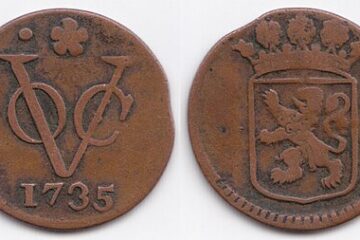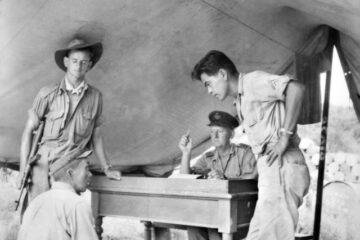Burkholder Field (sometimes referred to as Burkeholder), later known as McDonald Airfield (sometimes incorrectly referred to as MacDonald), was located 10 miles north west of Pine Creek in the Northern Territory. The airfield was built by Company “A” and HQ Detachment of the 808th Engineer Aviation Battalion from 11 May to 16 July 1942 with assistance from the Australian Allied Works Council.
They built 6, 000 ft of runway, 100 ft wide with 50 ft shoulders paved with 4 inches of gravel. They also built 5,000 ft of taxiways 40 ft wide with 15 ft shoulders paved with 3 inches of gravel and 18 dispersals without revetments. Company A also built Camp buildings.
McDonald Airfield was named after Wing Commander Joshua Roger Gray McDonald, the Commanding Officer of 13 Squadron RAAF, who was killed along with three other crew members in the crash of Lockheed Hudson A16-69 into the sea off Ambon, Netherlands East Indies (now Indonesia) on 10 December 1941.
McDonald Airfield was first occupied by No. 54 Operation Base Unit RAAF (54 OBU) and No. 1 Airfield Construction Squadron which completed construction of the airfield in early 1943.
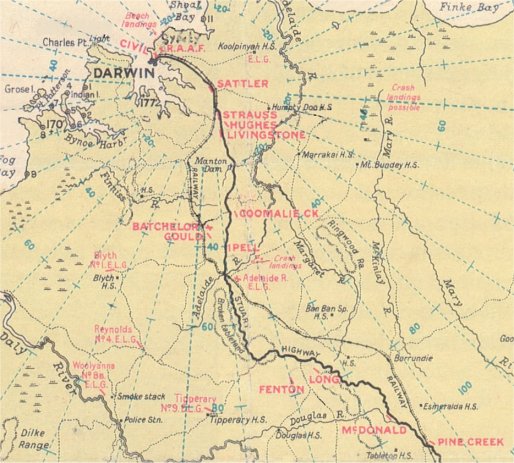
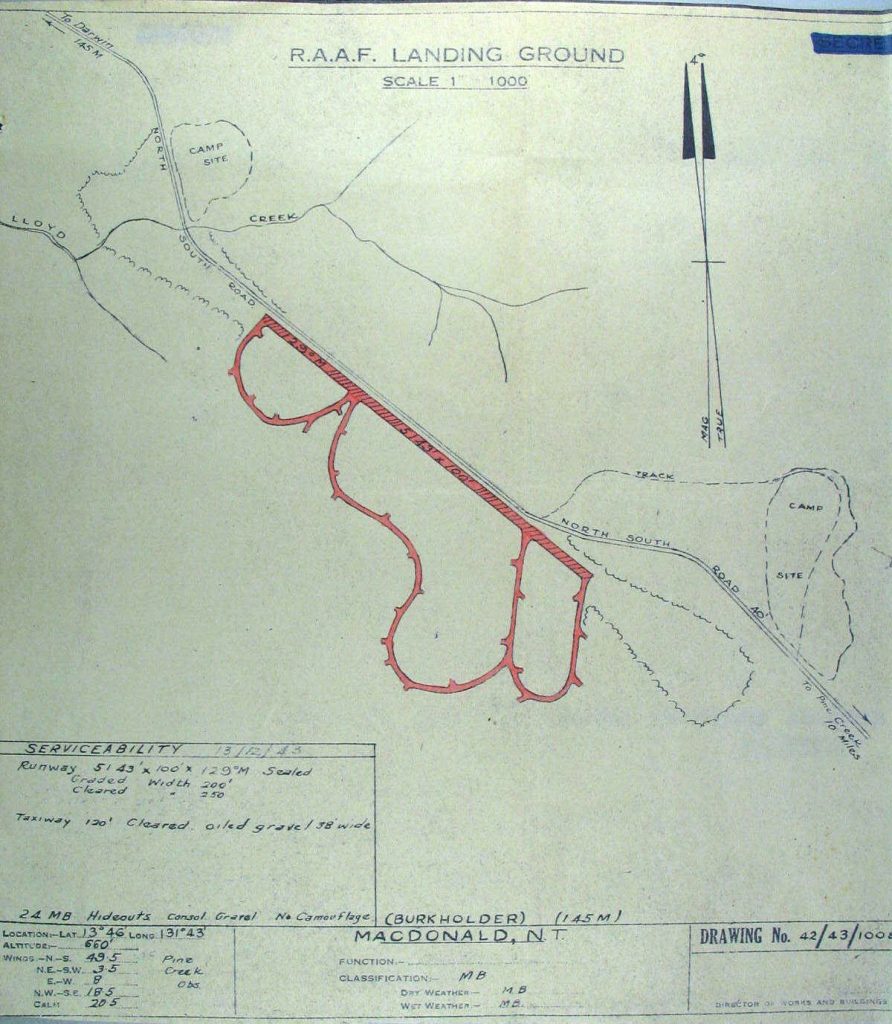
After the 18 Squadron NEI RAAF was officially established in Canberra and training was completed, they were ready for action. It was decided to bring the squadron to the Northern Territory from where their operations could be conducted.
It was agreed to split the 18 Squadron into four groups when moving them from Canberra to McDonald: the advanced party (vanguard group or quartermasters), the air echelon (the group that would move by plane), the main party (main group) and the rear party (rear-guard group). The vanguard would leave on November 26, 1942, the main group two weeks later, the planes and assigned personnel would leave three days after the arrival of the main group at McDonald and the rear-guard one day later.
The preparations for this move date back to September 25, 1942. On this date the ‘Mobility and denial orders for movements of 3 echelons’ of the 18 Squadron NEI RAAF appeared. These orders were issued in response to instruction no. 24/1942 from HQ AAF in Brisbane. This contained general guidelines for relocating a squadron in an emergency and was in fact the basis for the transfer method of the 18th three months later from Canberra to McDonald airfield in the NW Area near Darwin. The distance between the two airports was approximately 3100 km as the crow flies.
During the final preparations for the move, the message came on November 17 that there was no water at McDonald’s and that water trucks had to be deployed. There were also delays in the construction of the camp and improvements to the airfield. Overall, the preparation of McDonald’s did not go entirely according to plan. The local engineers were not only busy with McDonald but were also employed on other projects in the area. Drilling for water was unsuccessful for the time being and it also turned out that continuous maintenance of the runway was necessary because it was made of granite stone and crumbled easily during heavy rains. Due to all these problems, the AOC NW Area, Air Commodore Bladin, considered choosing Pine Creek Airfield as an alternative to the 18th, but was advised against it due to the unhealthy condition there. Since the RAAF Command AAF wanted the 18th operational as soon as possible, every effort was made to make McDonald as usable and habitable as possible.
From 1 December 1942 the squadron was now under operational command of RAAF Command AAF, but the move failed to materialise for the time being, except for the advanced party which departed on 25 November. This group consisted of 130 men (ML-KNIL and RAAF), carrying 45 vehicles and 100 tons of camp material. With two trains the journey was made to Alice Springs. From there they were transported by truck to Birdum, a distance of about 900 km. From Birdum it went by rail to Pine Creek and from there by road to McDonald. The group arrived at one o’clock in the morning on December 11. The journey had taken sixteen days.
On December 5, the main party, consisting of 185 men and 200 tons of material, left. The same route was followed but due to heavy rains this group was delayed for three days between Terowie and Alice Springs. Finally, she arrived at McDonald on 24 December 1942. This journey took nineteen days. The journey was very tiring for both the advanced and the main party. Twelve were sick, and once a car between Birdum and Alice Springs flipped over because the overtired driver had fallen asleep.
Pictures below of the transport to McDonald – Source: De Militaire Luchtvaart van het KNIL in de jaren 1942-1945
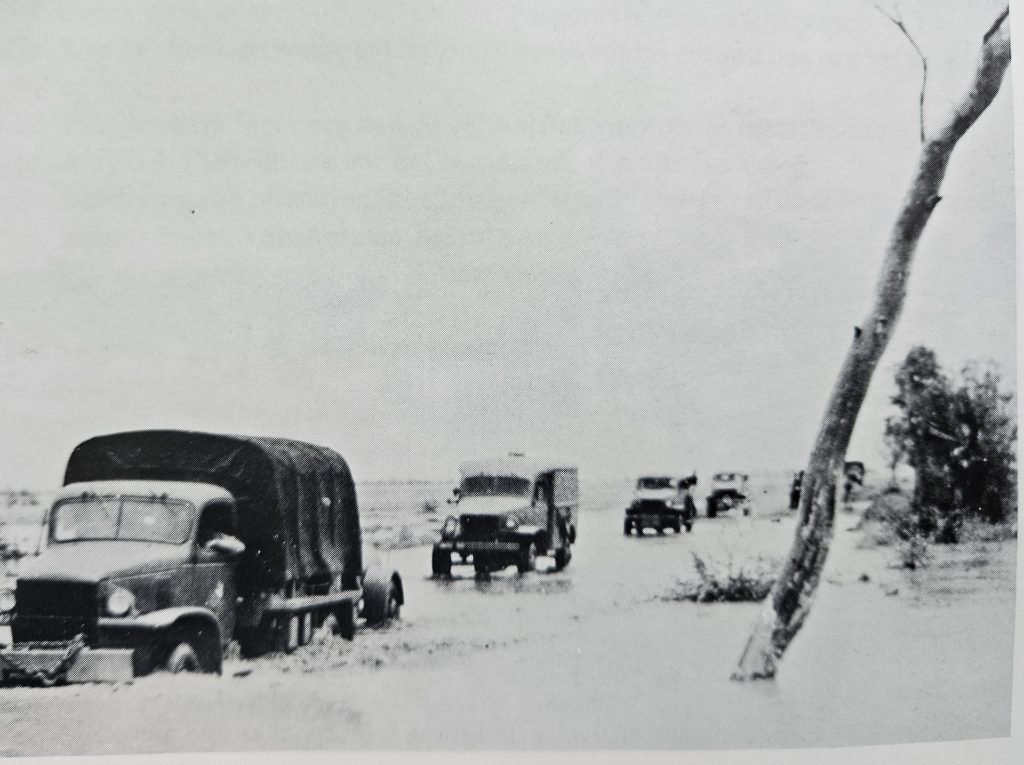
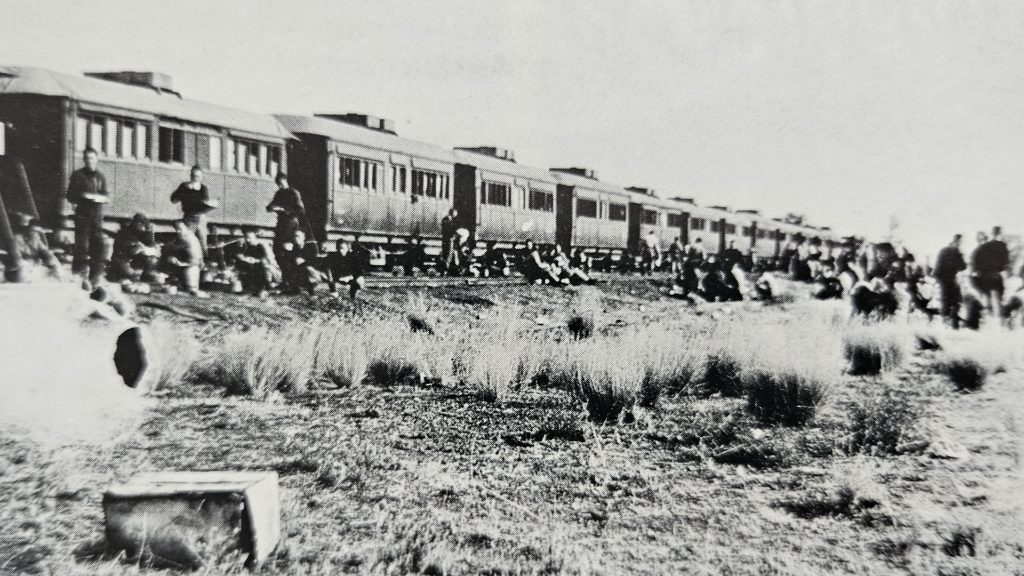

Things went less well with the air echelon. On 2 December a delay was noted in the modification program regarding the installation of additional fuel tanks at No. 1 Aircraft Depot at Laverton (Melbourne). It was not expected that nine aircraft could be ready for departure to McDonald until December 26. The remaining machines would only be able to leave after that. It was decided to let some of the machines go earlier, so that two planes departed for McDonald twice on 3 and 5 December. They would then later fly back to Melbourne for the modifications. Captain R.E. Jessurun along, to be able to lead the work of the quartermasters. The last aircraft arrived at McDonald on January 18, 1943.
The rear party left on December 29, 1942. This group consisted of 69 men with 200 tons of material and eleven vehicles. Unlike the previous groups, she went by ship from Sydney to Darwin.
This ship also carried part of a Spitfire unit to the Darwin area and arrived there on 12 January 1943. This group was also present at McDonald on 14 January. The journey took sixteen days.
So, the transfer of No. 18 Squadron NEI from Canberra to McDonald was officially completed on 18 January 1943, with the squadron coming under de facto operational command of RAAF Command AAF on the same date and receiving direct orders from operations room NW Area. Supplies moved into the 18th of No. 9 Stores Depot and periodic maintenance was done at Manbullo at the RAAF’s No. 1 Repair and Servicing Unit (RSU).
Logistically, McDonald airfield was too far away from intended targets so fully laden bombed up B-25’s were forced to land in Darwin specifically to refuel. So a few months later the Squadron relocated again, now to Batchelor NT situated further north and remained there until the squadron relocated finally to Balikpapan (Netherlands East Indies) in 1945 at the end of WWII. Here they were under the overall command of the No.79 Wing RAAF.
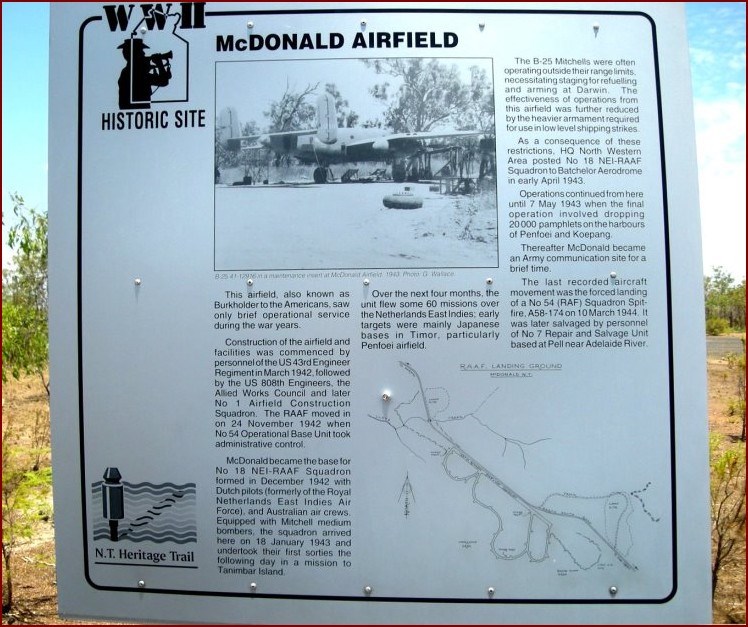
Pine Creek Airfield
The following pictures are from the nearby Pine Creek Airfield which was also used by the Dutch. It was also used as mentioned above in the move of the 18 Squadron from Canberra to McDonald Airfield.
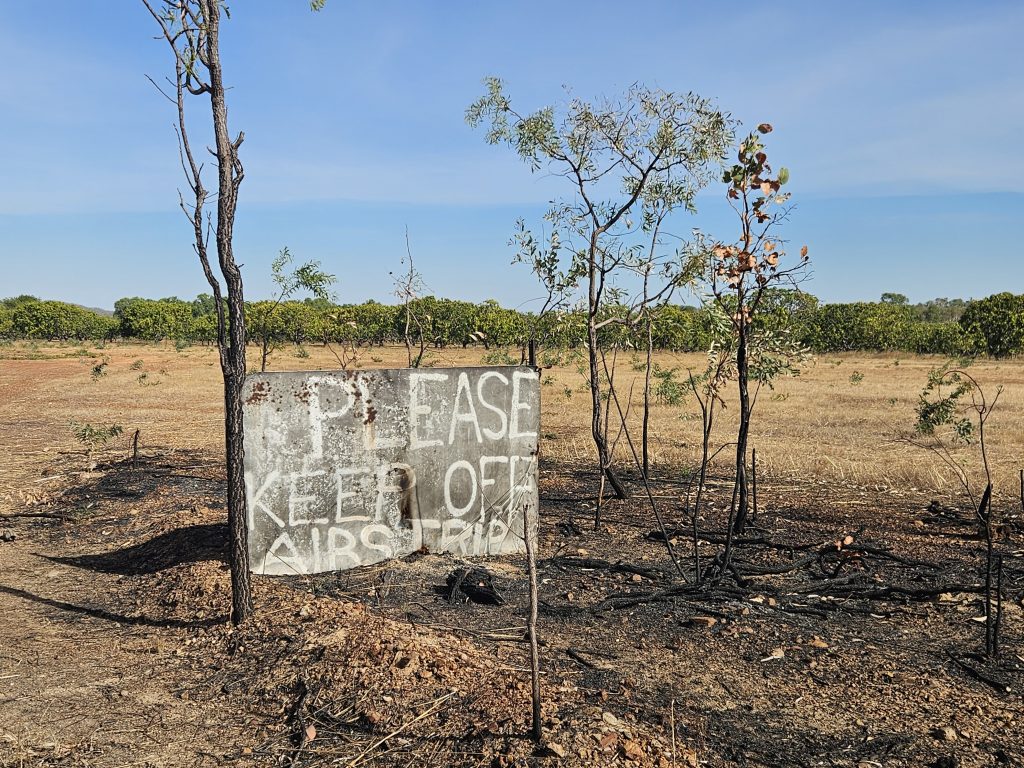
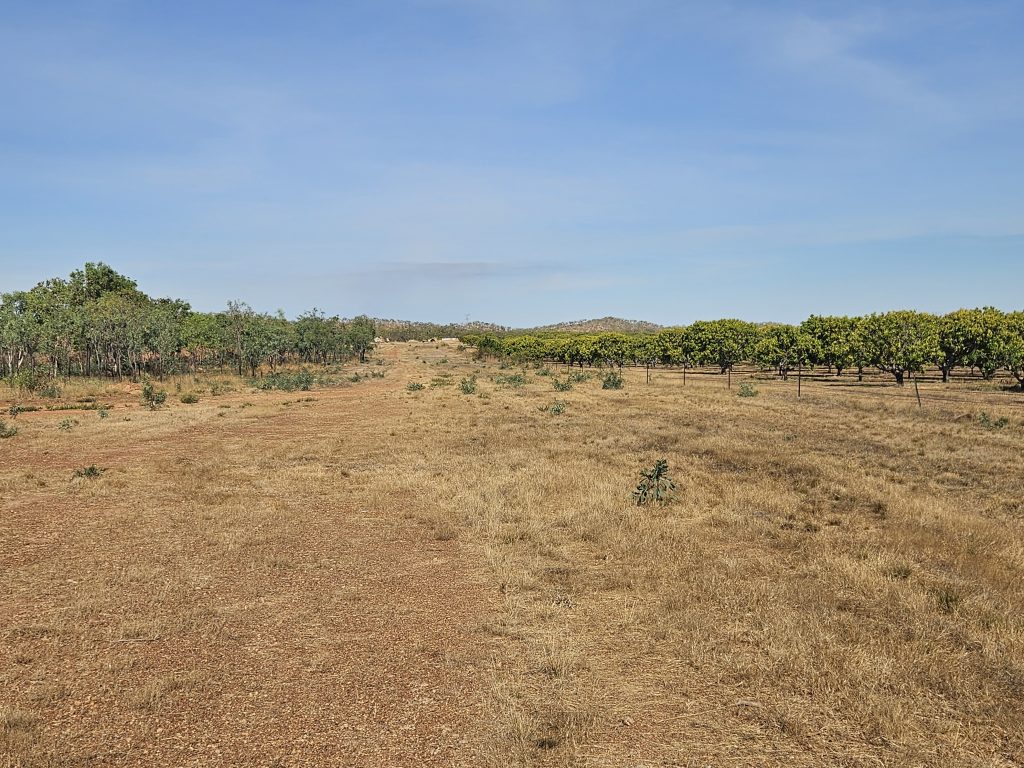

The pictures below are from the book Het Koninklijk Koloniale Nederlands-Indische Leger 1930-1950 . The captions are: Pictures taken early 1945 at an advanced position, mechanics working on the B25 Mitchells working on their planes,
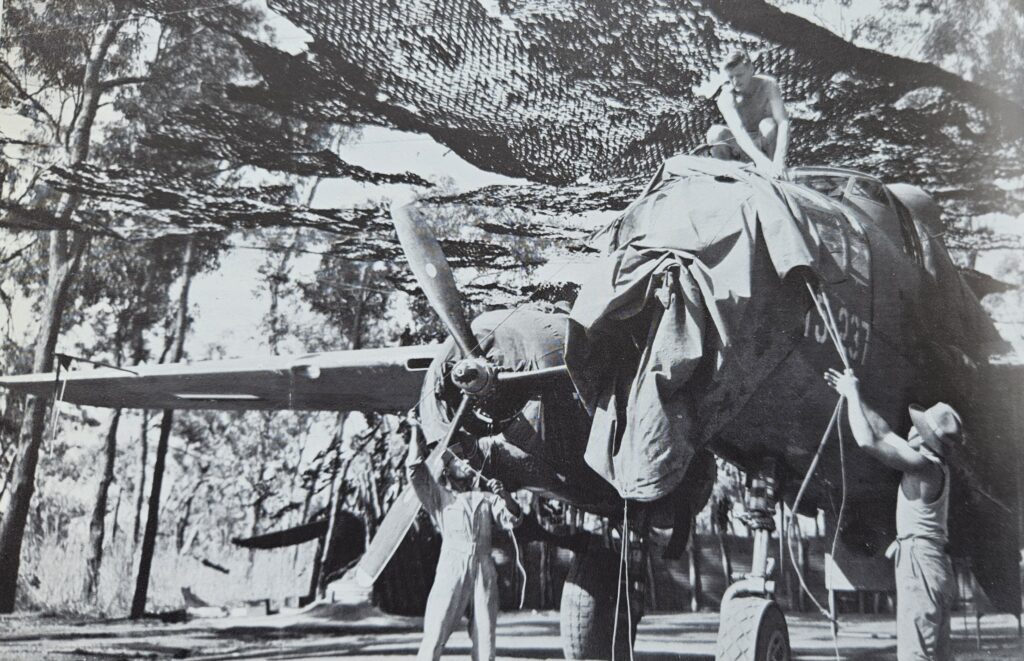
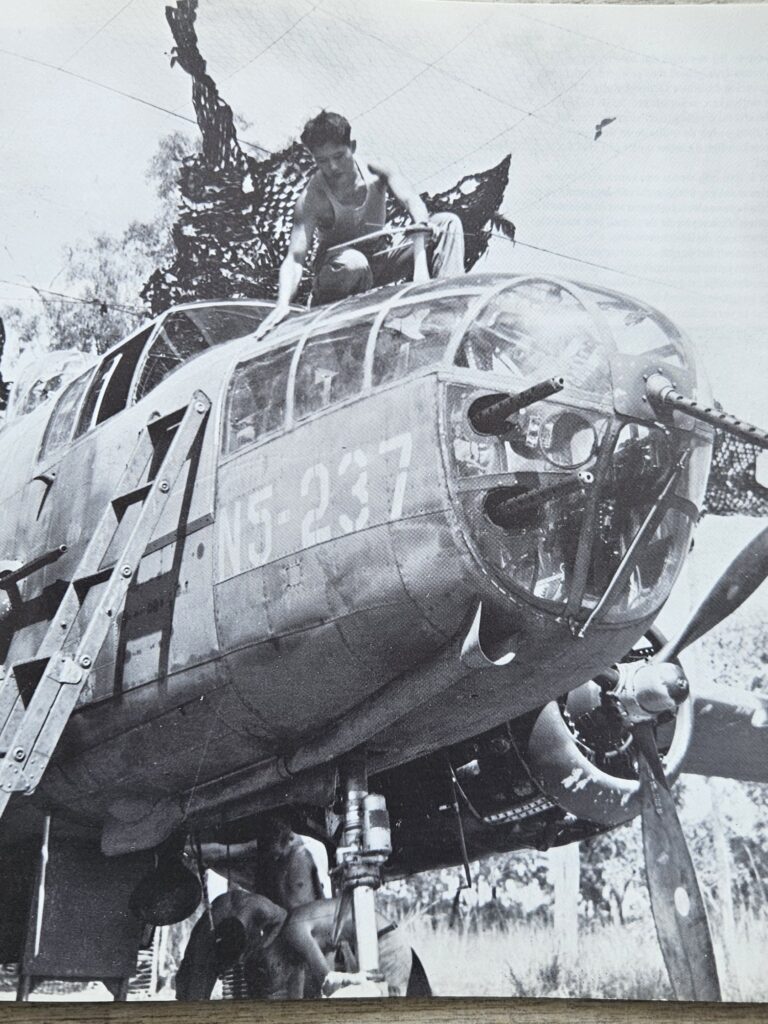
Paul Budde
Source: De Militaire Luchtvaart van het KNIL in de jaren 1942-1945 by O.G. Ward
See also Ozatwar
